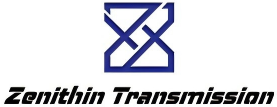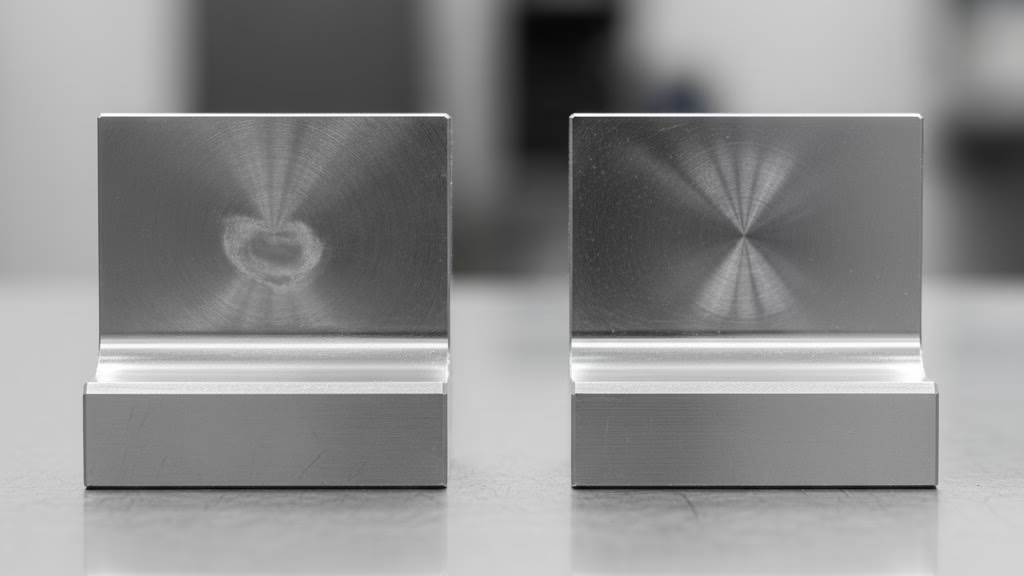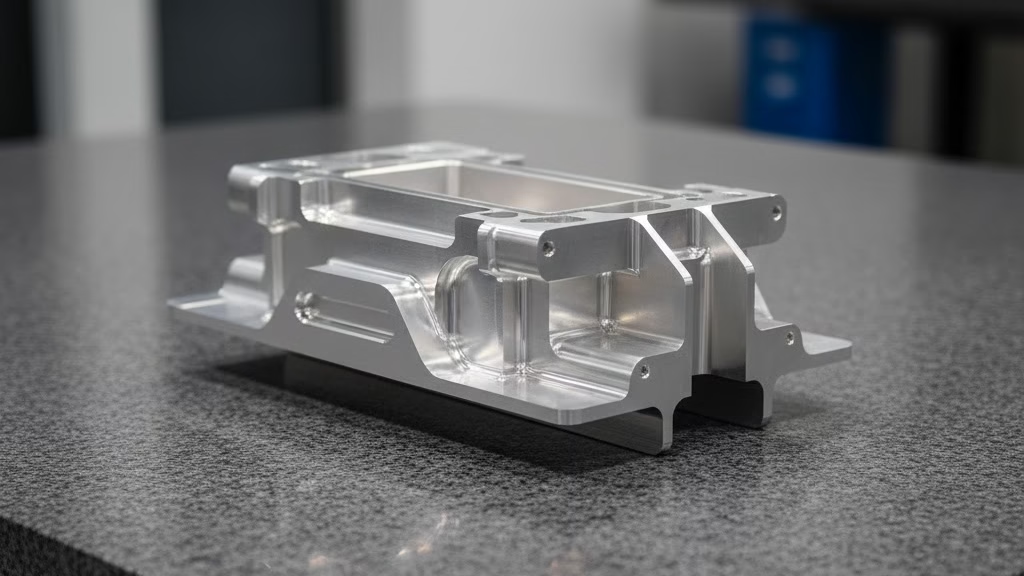Stop overpaying for CNC parts. This guide breaks down CNC Machining Pricing Tiers so you can eliminate hidden fees, forecast your budget accurately, and understand exactly how volume unlocks massive cost savings. We’ll show you the exact formula to use.
CNC machining pricing tiers are based on a simple formula: Unit Price = (One-Time Setup Cost / Order Quantity) + Variable Cost per Part. This means the fixed setup cost (NRE) is amortized across more units, drastically lowering the unit price as order volume increases.
But the formula is just the beginning. Read on to see real-world data tables, learn how to spot hidden supplier traps, and discover how DFM can lower your unit cost even further.
Why Does Unit Cost Change?
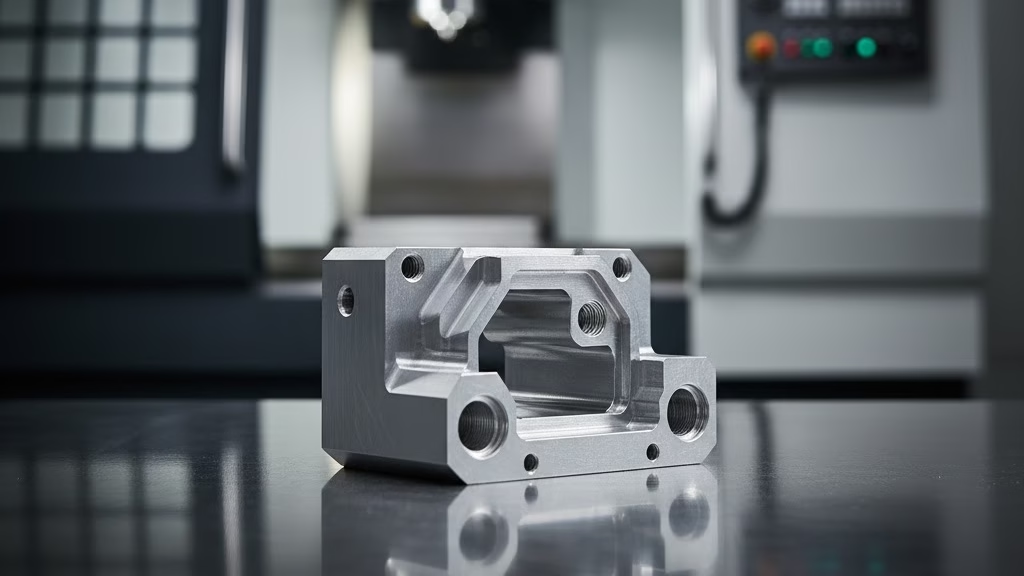
To understand CNC machining pricing tiers, you first need to look “under the hood” of a quote. The final unit price isn’t arbitrary; it’s determined by a simple and transparent formula:
Unit Price = (One-Time Setup Cost / Order Quantity) + Variable Cost per Part
When this logic is hidden, it feels like a “black box.” When it’s transparent, it becomes a powerful tool. Let’s break down the two main parts of that equation.
What Are One-Time Setup Costs (NRE)?
The most significant factor in prototype or low-volume pricing is the Non-Recurring Engineering (NRE) cost, often just called the “setup cost.” This is a fixed, one-time charge required to prepare your job. It’s not part of the per-part cost.
This NRE fee typically covers:
- CAM Programming: The engineering time to translate your CAD file into machine-readable G-code.
- Machine Setup: The technician’s time to set up the CNC machine, load the right tools, and calibrate for your specific part.
- Fixturing: Preparing the vices or custom jigs needed to hold your part securely during machining.
- First Article Inspection (FAI): The quality control process to measure and verify the first part off the line against your print.
This cost is fixed, whether we machine 1 part or 1,000 parts. This is precisely why a single prototype is expensive—that entire setup cost is applied to just one unit.
Here’s a critical insight from our experience: Be cautious of suppliers who claim “$0 NRE” on a prototype quote.
More often than not, they are simply hiding that setup cost inside a high unit price. This makes their quote seem attractive for 10 pieces but becomes a major problem when you need to scale.
A true production partner will always be transparent about the NRE. A clearly stated NRE isn’t a penalty; it’s a promise of an honest, scalable pricing model.
What Are Variable Costs?
This is the second half of the formula and is much simpler. The variable cost is the repeatable cost tied directly to producing each individual part. It consists of:
- Material Cost: The cost of the raw stock (e.g., a block of Aluminum 6061 or a rod of P20 steel) for one part.
- Machine Time: The literal time the CNC machine spends cutting that one part.
This cost remains relatively stable per part. Now, let’s put these two elements together and see the pricing tier logic in action.
The Price Tiers in Action: Cost Amortization from 1 to 10,000
So, let’s see how the formula Unit Price = (NRE / Quantity) + Variable Cost plays out in a real-world example.
Let’s assume a part has:
- One-Time Setup Cost (NRE): $300
- Variable Cost per Part (Material + Machine Time): $15
Here is how the unit price changes dramatically as the NRE is “amortized” (spread out) across more units:
| Order Quantity (Q) | NRE Amortized Cost ($300 / Q) | Variable Cost per Part | Final Unit Price | NRE % of Unit Price |
|---|---|---|---|---|
| 1 (Prototype) | $300.00 | $15.00 | $315.00 | 95.2% |
| 10 (Samples) | $30.00 | $15.00 | $45.00 | 66.7% |
| 100 (Low Volume) | $3.00 | $15.00 | $18.00 | 16.7% |
| 1,000 (Mid Volume) | $0.30 | $15.00 | $15.30 | 2.0% |
| 10,000 (Production) | $0.03 | $15.00 | $15.03 | 0.2% |
Finding the “Sweet Spot”
As you can see, the price drop is most significant in the early stages. The jump from one part ($315) to 10 parts ($45) is massive.
But the real “sweet spot” for procurement often happens between 10 and 100 units. In that range, the NRE’s impact on the unit price falls from 66.7% to just 16.7%. The price becomes stable and predictable.
By the time you reach 1,000 units, the $300 setup cost is almost entirely absorbed, and the price ($15.30) is very close to the true variable “bottom line” cost.
You no longer have to wait 48 hours for a quote just to get a rough budget. By understanding this logic, you can estimate 80% of the cost in minutes and keep your project moving forward.
How We Proactively Help You Reduce Costs

A transparent quote is the foundation of our partnership. But the real value comes from turning that quote into a conversation about cost optimization.
We don’t just quote your part as-is. We analyze it. Our engineers are trained to find DFM (Design for Manufacturability) opportunities that can reduce your machine time and, therefore, your unit cost, without compromising your part’s function.
Here’s a real-world example:
- Before (The Original Design): A client submitted a part with a tiny 0.5mm internal radius (R-corner). To machine this, we had to use a very small, fragile tool, running at a slow speed. The estimated machine time was 35 minutes per part. At 1,000 units, the quoted price was $15.30/part.
- After (The DFM Suggestion): Our engineer contacted the client and asked, “Is this 0.5mm radius critical for function?” The client confirmed it was only for clearance and a 2mm radius was acceptable.
- The Result: By changing that single feature, we could use a larger, more robust tool, cutting the machine time to just 18 minutes. The new, final price for the same 1,000 units dropped to $12.80/part—a 16% savings.
This is our commitment: We proactively look for these win-win opportunities before you place your order. We aren’t just order-takers; we are your manufacturing partners, dedicated to helping you hit your cost targets.
Aligning Price Tiers with Delivery Timelines
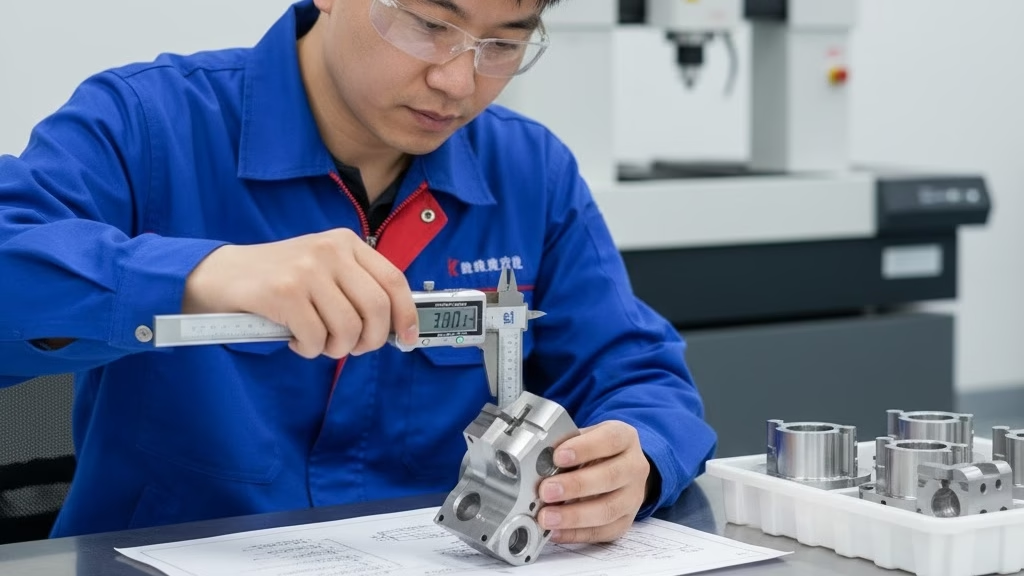
A transparent CNC machining pricing tier is essential, but it only solves half of the procurement challenge. A low price for 1,000 units is meaningless if your supplier cannot meet the delivery deadline.
This is the “scalability cliff” many purchasing managers experience: the prototype shop that was fast with 10 pieces simply does not have the capacity or planning for a production run.
Your decision rests on three pillars: Quality, Cost, and Delivery (QCD). A true partner must be transparent about all three.
That is why we believe in pairing our price tiers with corresponding delivery tiers. This provides a complete picture for your project planning.
| Order Quantity | Unit Price (Example) | Estimated Lead Time |
|---|---|---|
| 1-10 (Prototype) | $45.00 | 5-7 working days |
| 11-100 (Low Volume) | $18.00 | 10-12 working days |
| 101-1000 (Mid Volume) | $15.30 | 20-25 working days |
This simple table is our commitment to you. It proves that we have not only calculated your unit cost but also planned the machine capacity to ensure your project scales smoothly from prototype to production.
This level of transparency is the foundation of a reliable supply chain. As the Chartered Institute of Procurement & Supply (CIPS) states, “Transparency is the bedrock of trust in any supplier relationship… A supplier who proactively shares their pricing structure… is demonstrating a commitment to a partnership built on mutual value.” We believe this commitment must include delivery.
Your Next Step: From a Guess to a Guarantee
Choosing a CNC machining supplier isn’t just about selecting a price from a list. It’s about choosing a cost model you can trust and a partner you can grow with.
We hope this transparent look at our CNC machining pricing tiers has given you the confidence and the data to move forward. The logical, predictable cost structure we’ve shared isn’t just for a blog post—it’s the guarantee you need to build a reliable budget, eliminate procurement risks, and drive your project forward with efficiency.
Stop working in the dark.
Are you ready to see this logic applied to your specific part? Upload your CAD file today, and our team will return a fully transparent quote. You will see all the costs, with NRE and unit prices clearly separated, so you know exactly what you’re paying for.
Have a more complex project or want to discuss DFM?
If you’re still in the design phase or want to explore cost-saving opportunities before you finalize your part, schedule a 15-minute call with our engineering team. We’re here to help you optimize your design for manufacturing.
Ready to Start Your Project?
You have the data. Now let our experts deliver the high-quality parts your project deserves. Let’s build a reliable supply chain together.
References & Notes
[1] Non-Recurring Engineering (NRE): Refers to the one-time costs for designing, developing, and testing a new product or component, which are not repeated in subsequent production runs. Our article explains how amortizing this cost is key to volume pricing.
[2] Design for Manufacturability (DFM): An engineering practice of designing products in such a way that they are easy to manufacture. As noted in the article, this practice (e.g., changing R-corners) is a primary driver of cost reduction, separate from simple volume discounts.
[3] QCD (Quality, Cost, Delivery): A foundational metric in procurement and project management used to evaluate supplier performance and make balanced sourcing decisions, as opposed to focusing on cost alone.
